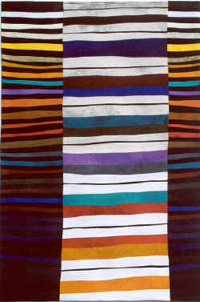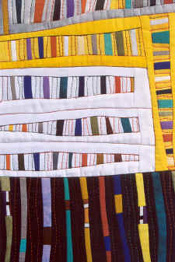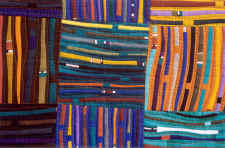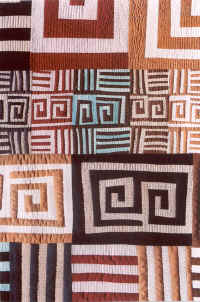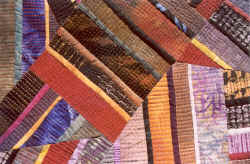 The other day on my walk to the park, I was almost run over by a man in a large pickup truck. It was a nice, shiny red Ford or some muscular American brand, the kind you see in ads pulling a house or 18 wheeler, like that’s what you need it for. The man in it…well, I’ll let my description of the truck speak for itself.
The other day on my walk to the park, I was almost run over by a man in a large pickup truck. It was a nice, shiny red Ford or some muscular American brand, the kind you see in ads pulling a house or 18 wheeler, like that’s what you need it for. The man in it…well, I’ll let my description of the truck speak for itself.
The road is as residential as it gets, of no use to anyone but those who live nearby. There are no sidewalks in our neighborhood, which is a mixed blessing. Everyone who drives through (or almost everyone) knows pedestrians use the road, so they slow down. But unfortunately some drivers consider pedestrians to be a hazard to their vehicles and would rather they just get the hell out of the way, so they can get on with their busy day!
As I reached the middle of the intersection, I noticed the large, red truck coming from my right. So I started to trot to get out of his way. Instead of slowing or going around me, he stayed his course and drove in front of me, barely missing me as I moved in the direction of his path. He actually swerved a bit to his right to make sure he made his point to drive in front of me. Needless to say I was alarmed, frightened and then very angry.
 Very, very angry. I had every right to be. He was scum for doing this to anyone. My mind raced, wondering if he treated his wife and children with such obnoxious disdain. Since I’m gay, I assumed he was homophobic. I gave him the finger, several, in fact. I shot an Uzi full of fingers at him. I noticed he turned left at the next intersection. I thought he might be turning around to confront me. My adrenaline rushed. Every cell in my body prepared for defense. I was invincible, ready for the fight. My righteous indignation and rage would cover me for any lack of power. I picked up a large rock to defend myself. My body shook, but I felt high with power!
Very, very angry. I had every right to be. He was scum for doing this to anyone. My mind raced, wondering if he treated his wife and children with such obnoxious disdain. Since I’m gay, I assumed he was homophobic. I gave him the finger, several, in fact. I shot an Uzi full of fingers at him. I noticed he turned left at the next intersection. I thought he might be turning around to confront me. My adrenaline rushed. Every cell in my body prepared for defense. I was invincible, ready for the fight. My righteous indignation and rage would cover me for any lack of power. I picked up a large rock to defend myself. My body shook, but I felt high with power!
Well, he didn’t come back. Relieved and a bit embarrassed when I realized people along the bike path might be wondering why I was carrying a head sized rock, I began to calm down. I put down the rock and continued my walk.
Right away I knew what I had to do. The words came to me as from a teacher, though the voice was mine. “By giving in to your anger, you are letting him control you, becoming like him.” I struggled with this for a few minutes before putting my rage aside. I filled my lungs with the breath I had come to know on these walks, a breath of playful introspection. I began to feel sorry for that man, but left the thought at that. The trees and river and prairie beckoned.
A half hour later on the same walk, I was surprised to find myself running like a child around a large, open field with my eyes closed. I felt as if I were flying. By closing my eyes, I was able to face the fears I had of losing control, of falling into a pit, or perhaps the fear of making a fool of myself by falling flat on my face. But by releasing my neck to float above my body, I was able to (with concentration) release the fear from myself. Then I was free to playfully navigate the slightly irregular ground.
 A feeling of free abandonment entered me, or at least my body. I began to swerve from side to side, leading with my head. My body followed. Suddenly I flashed back to being 8 or 9 years old, when I last remember being so free and “floppy”. For some reason, that period in my life held a transition from feeling free to self-conscious. I specifically remember how differently running felt before and after. I don’t know pivotal the event, if there even was one. Perhaps I just “grew up”.
A feeling of free abandonment entered me, or at least my body. I began to swerve from side to side, leading with my head. My body followed. Suddenly I flashed back to being 8 or 9 years old, when I last remember being so free and “floppy”. For some reason, that period in my life held a transition from feeling free to self-conscious. I specifically remember how differently running felt before and after. I don’t know pivotal the event, if there even was one. Perhaps I just “grew up”.
Flopping as I ran through that field with eyes closed, I felt I regained some of who that child was, and that he was still alive in me. I had come a long way during that walk, from poisoned, fearful, vengeful man to free flowing, replenished child.

